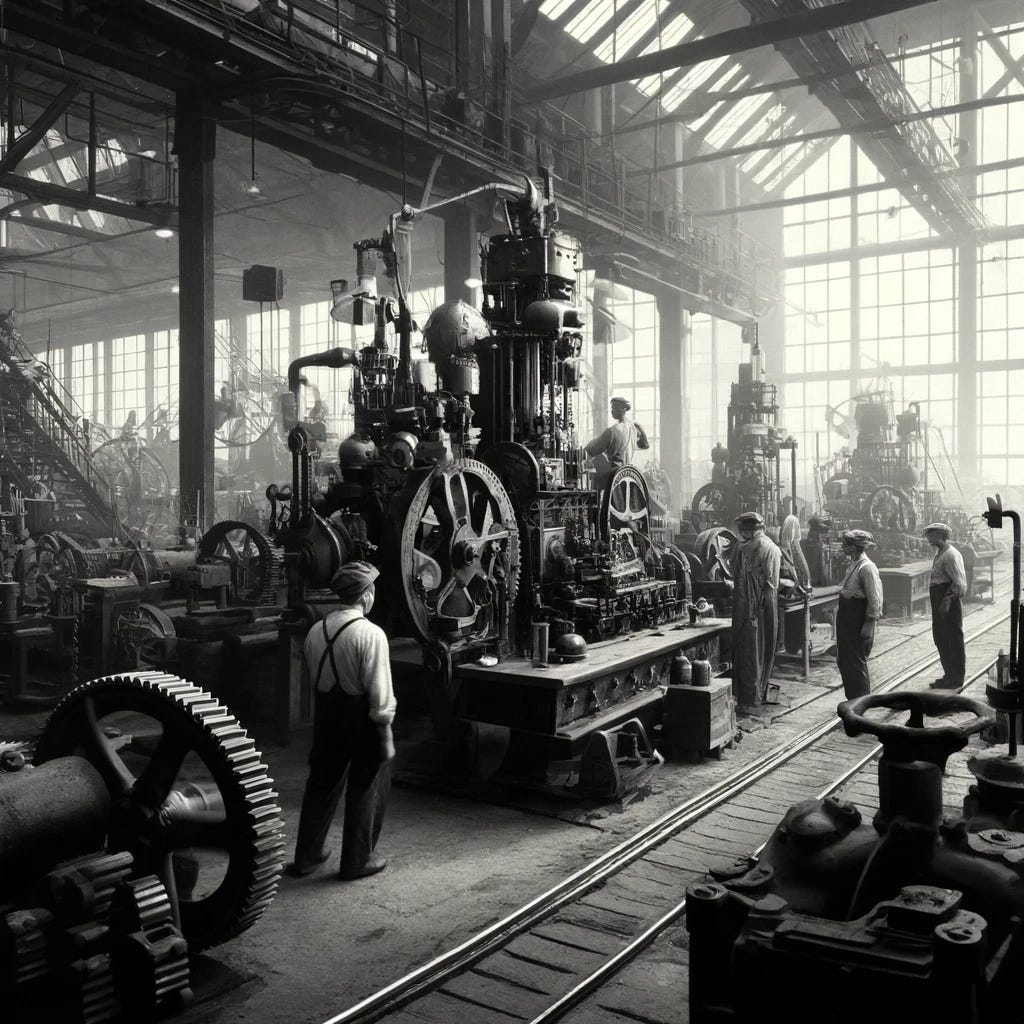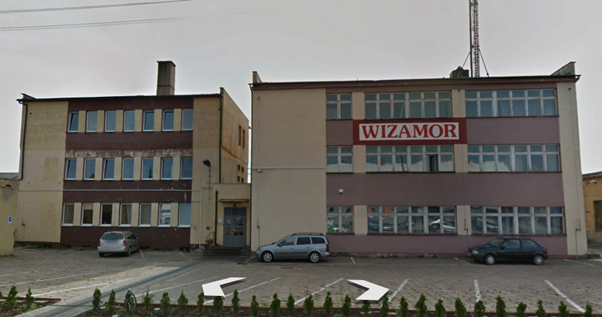Hydrotor SA – Crisis Year Offers an "OK" Buying Opportunity
Note: This post was written based on the 3Q23 figures.
Hydrotor SA (HDR) manufactures hydraulic components such as gear pumps for combine harvesters, loader buckets, forklifts, and vans; hydraulic selection valves with manual and electronic control for loader buckets and construction machinery, as well as motor oil pumps and overpressure and return restrictor valves. At 31 PLN per share, HDR is currently valued at a P/TB of 0.65 and an EV/S of 0.66, which is low for a company that has only had one loss year since at least 2002 (unfortunately, 2023), historically achieved an ROIC of 10%, and consistently paid dividends (55% payout ratio) every year since 2001. In addition, the two largest shareholders have continuously increased their holdings over several years.
HDR's turnover is 126 million PLN and it has shown an annual sales growth of 4% since 2013. The group consists of four operating companies: Hydrotor SA (100%), Agromet ZEHS Lubaÿ SA (99.99%), WPH Sp. z o. o. (100%), and WZM Wizamor Sp. z o. o. (96.9%). The key markets are Poland (56%), Germany (33%), the Netherlands (5%), and Spain (3%). Customers include LUKAS Hydraulik GmbH, Parker Hannifin Corporation, CLAAS Industrietechnik GmbH.
The company's origins trace back to 1945, when "Państwowe Przedsiębiorstwo Traktorów i Maszyn Rolniczych" (the state company for tractors and agricultural machinery) was founded. In 1991, "HYDROTOR" SA was established based on the former state company, and in 1998 it was listed on the Warsaw Stock Exchange.
2023 – A Perfect Storm
In 2023, turnover decreased by 24% to 126 million PLN (second worst turnover drop after the financial crisis's -27%) and the gross margin fell from 16.8% to 10.9% (22% over time – but in a long downward trend), primarily due to increased raw material costs (steel and aluminum). In Q4 2023, sales for the group decreased by 30.6% quarter-on-quarter and in the domestic market by a full 47% quarter-on-quarter. The main reason is a declining agricultural sector. In addition to a depressed gross profit, the group felt the pressure of sharply rising operating expenses, and 2023 became the group's first year with negative EBIT (-2.8 million PLN, -2.2%) since at least 2002. EBIT margins have historically been around 8.5% (12% - 14% in peak years and 5% - 7% in historically weak years).
The company reduced its staff from 629 to 508 (-19%) due to low demand (hesitant customers) and because the Polish minimum wage increased by 20% during the year. All subsidiaries saw a drop in turnover; Hydrotor (-27%), Agromet Zehs (-27%) WPH (-2.5%) and WZM Wizamor (-45%). However, the first three managed to deliver positive results despite the drop. WZM Wizamor, on the other hand, reported a loss of 1 million PLN on a turnover of 6.3 million PLN.
Currently, a restructuring program is underway in WZM where the business will be merged into the parent company after which the property will remain in the company and then be sold off. Whether it involves a planned sale-and-leaseback or a total relocation and disposal is unclear. The property (below – which looks a bit worn) is about 5,000 square meters and likely has a negligible value relative to the company's tangible equity of 115 million PLN.
A Stable and Quite Nice Small Company that Should Weather the Current Market Headwinds
Although things currently look bleak, HDR is a relatively fine company. On average, ROIC has been around 10% over time, and TB per share has increased by 7% annually since 2002, despite shareholders receiving dividends every year since 2001 (average payout ratio of 55%). In 2023, 2 PLN per share was distributed, which at the current rate yields 6.25%. Based on this year's results, shareholders might not expect any dividends this year, but on the other hand, given such a long and consistent dividend history, it is not unthinkable. The summons to the meeting with the dividend proposal is usually sent out at the end of May, and the annual general meeting is held in June.
The operational cash flow has been positive every year since 2001. D&A as well as capex have historically been around 6% of turnover. However, it is likely that the company has some capex heavy years ahead, as aside from 2019 (11 million PLN), the last major capex programs were in 2011 (14 million PLN) and 2012 (17 million PLN) – while three of the last four years have been very capex-light. On the positive side, the company aims to reduce working capital binding and expects it to have some effect at the start of 2024. When studying working capital ratios, the company is currently around historical averages (net working capital on average 44% of turnover over time) – but hopefully, management has identified overstock or other ways to improve the wc situation.
A strong balance sheet gives HDR good conditions to survive the current harsh business climate. A net debt of only 9.3 million PLN (excluding leasing) gives a net gearing of 8%. Liquidity-wise, the current ratio is also good at 2.31, and part of the business problems are "ring fenced" in WZM. However, it should be noted that the current net debt, although low in absolute terms, is the highest debt level the company has had at least over the past ten years (historically virtually unleveraged).
Looking at the asset side of the balance sheet, the most important items are PPE (100.4 million PLN), inventory (50.4 million PLN), and receivables (26.6 million PLN). An odd post on the balance sheet is PPE at 100 million PLN, which is written up by 27.5 million PLN, likely explaining the deferred tax post of 7.1 million PLN on the liabilities side. Buildings and land are recorded at 41 and 6 million PLN, respectively. Below text is in the PPE note in the annual report. We do not doubt the post but note that there likely are no hidden values under the PPE post, which is often the case when buildings and land are booked at acquisition cost reduced by depreciation.
ATL Valuation Considering P/TB but Historically "High" Net Debt Still Offers Limited Upside
At 31 PLN per share, HDR is currently valued at a P/TB of 0.65 and an EV/S of 0.66, compared to historical averages (last decade) of 0.88 and 0.76, respectively. At a normalized EBIT (8.5% EBIT margin on current sales volume – which is considered depressed) the stock is currently traded at an EV/EBIT of 7.8, compared to a historical average of 9.3.
In a scenario where the company reports growth of say 3% in 2024 and 10% in 2025 (bouncing back in a better market climate) while making zero profit in 2024 and reaching a normalized EBIT margin in 2025, this would result in an EBIT of 12.1 million PLN. Even if management tries to release working capital, they are unlikely to significantly reduce the post in a scenario where turnover again increases (we do not count on any wc-release). After a year's earnings in 2025 (we do not expect dividends during these two years) the stock might be valued at a historical average (9.3x EBIT), which then gives a justified EV of 113 million PLN (net debt of 7 million PLN – calculated with capex = D&A) and a justified equity value per share of 44.1 PLN – which from the current level would be a CAGR of 19%.
The company has 2.4 million outstanding shares, of which 96k are preference shares (5x voting power – otherwise equivalent to the ordinary shares). The preference shares are primarily owned by board member Wacław Kropiński, who had an operational role from 1991 to 2018. Otherwise, the company is controlled by Mariusz Lewicki (17.7% of the capital and 15.3% of the votes) and Ryszard Bodziachowski (16.9% of the capital and 14.6% of the votes). NOSH has been unchanged since at least 2004. Lewicki also controls 11% of the significantly larger Apator (APT), whose stock holding has a market value of 50 PLN – compared to 14 PLN in market value for the HDR holding.
In total since 2014 (mostly after 2018), Lewicki has conducted 36 purchase transactions totaling 6.6 million PLN (average price 37.0 PLN/share) and Bodziawski 13 purchase transactions totaling 0.6 million PLN (average price 38.2 PLN/share). They together own 34.5% and thus do not seem to be considered a "concert party" (which would have triggered a mandatory bid when they passed 33%). So likely, insider purchases will continue as long as the valuation is low and Lewicki and Bodziawksi have liquid funds aside.
In summary, the assessment is that HDR is an "OK" case. The downside is limited in asset backing, strong financial position, and ATL valuation. The fact that major shareholders continuously increase also indicates that they do not see the current market situation giving the company draconian penalties. Moreover, the current price is just over 15% lower than what the major shareholders have paid on average in recent years. A negative might be that the upside also seems somewhat limited. But the stock might be seen as a stable midfielder in a diversified deep value portfolio.
Finally, it should be noted that until November 2023, HDR had only traded below 0.70x TB on 12 of 2,849 trading days since mid-2012 – that is, under 0.4% of the trading days. The average "one year forward" return for those 12 trading days was 49% – so perhaps there is an option for higher return potential than what the above normalization scenario suggests.
(Disclaimer: at the time of publication, the writer owns shares in the mentioned company)







